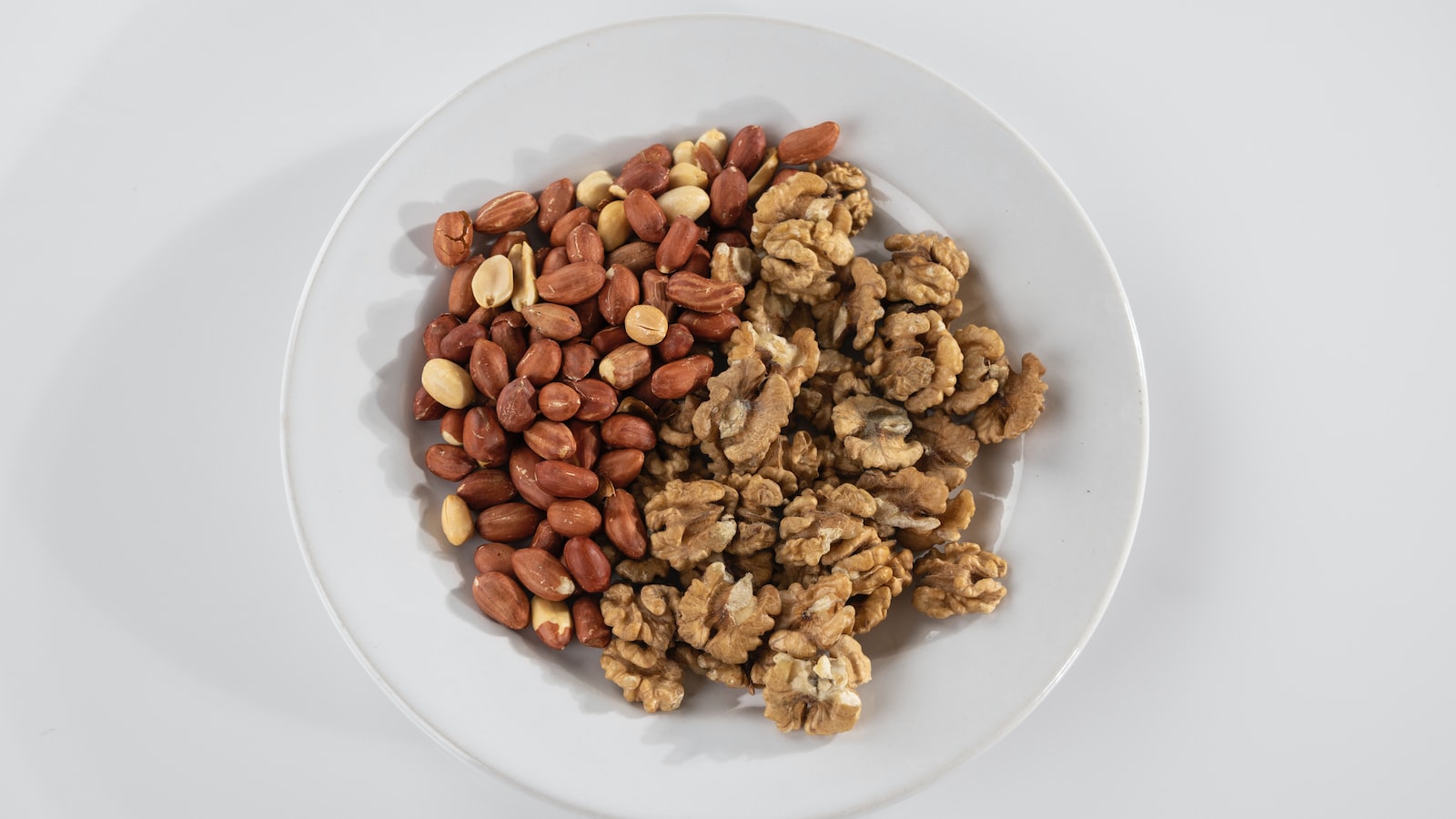Unleashing Nature’s Green Power: Unraveling the Collard Conundrum
Amidst a world saturated with hues of green, there resides a leafy titan that stands tall among its peers—the magnificent collard greens. With an unrivaled reputation for robust growth, astonishing versatility, and tantalizing flavors, collard greens are a force to be reckoned with in the realm of hearty vegetables. Yet, behind this verdant conqueror lies a secret, concealed within the depths of soil and nutrients: the quest for the perfect fertilizer.
In our ceaseless endeavor to unleash the full potential of collard greens, we find ourselves pondering an age-old enigma—what truly is the best fertilizer for these leafy wonders? As we delve into the depths of horticultural science, exploring the nuanced differences between organic and synthetic fertilizers, and dissecting the intricate dance of nutrients, we embark on a journey to demystify this perplexing puzzle.
Join us as we unearth the hidden treasures buried within the soil, uncovering the power that lies within the humble fertilizer. With a creative twist and the impartiality of a neutral observer, we endeavor to answer the very question that has tormented gardeners and collard connoisseurs alike.
Prepare to wander through the wondrous world of botanical nourishment, unlocking the secrets that will help us cultivate collard greens that surpass all expectations. Brace yourself for a captivating exploration that will empower you to transform your garden into an oasis of culinary delight. Together, let us embrace the allure of soil alchemy and savor the flavors of truly exceptional collard greens, fortified by the best fertilizer nature can provide.
Choosing the Perfect Fertilizer for Thriving Collard Greens
Collard greens are a nutritious and delicious addition to any meal, but in order for them to thrive, choosing the perfect fertilizer is essential. To ensure your collard greens reach their full potential, it’s important to consider a few key factors when selecting the best fertilizer.
Firstly, consider the nutrient content of the fertilizer. Collard greens require a balanced blend of macronutrients such as nitrogen, phosphorus, and potassium. A fertilizer with an NPK ratio of 10-10-10 or 14-14-14 would be a good choice to provide a well-rounded supply of essential nutrients. However, keep in mind that collard greens are heavy feeders, so a slightly higher nitrogen content may be beneficial for vigorous leaf growth.
Additionally, organic fertilizers are another excellent option for collard greens. Rich in natural ingredients such as compost, manure, or bone meal, these fertilizers not only provide essential nutrients but also improve soil structure and promote beneficial microbial activity. Organic fertilizers are environmentally friendly and help maintain long-term soil health, ensuring your collard greens not only thrive but also contribute to a sustainable gardening practice.
To further aid in your selection process, here are some features and tips to consider when choosing the perfect fertilizer for your collard greens:
| Features/Tips | Benefits |
|---|---|
| Slow-release formula | Provides continuous nutrient supply without risking overfertilization. |
| Water-soluble fertilizer | Allows for quick absorption by plants and ensures nutrients are readily available. |
| Specifically designed for leafy greens | Contains micronutrients like iron and magnesium essential for vibrant and healthy collard greens. |
Remember, choosing the perfect fertilizer for collard greens is crucial for their growth and vitality. By considering the nutrient content and opting for organic options, you can provide your collard greens with the nourishment they need to thrive, ultimately enhancing the flavors and nutritional benefits of these remarkable leafy greens.

Unveiling the Nutrient Requirements of Collard Greens
Collard greens are a versatile and nutritious addition to any garden, but to ensure their optimal growth and abundant yield, finding the best fertilizer is crucial. Understanding the specific nutrient requirements of these leafy greens is the first step towards successful cultivation. Collard greens thrive in nutrient-rich soil that is well-drained and slightly acidic, with a pH level ranging from 6.0 to 6.5. They require a balanced supply of macronutrients, including nitrogen (N), phosphorus (P), and potassium (K), as well as essential micronutrients like calcium (Ca), magnesium (Mg), and iron (Fe).
When selecting a fertilizer for collard greens, it is important to choose one that addresses these nutrient needs. Organic fertilizers, such as compost or manure, not only provide essential nutrients but also improve the soil structure and promote microbial activity. Another great option is slow-release fertilizers, which ensure a steady supply of nutrients over an extended period. These fertilizers come in various forms, including granules or pellets, and are readily available at garden centers. Additionally, incorporating an all-purpose organic fertilizer into the soil before planting can help establish a strong foundation for the collard greens’ growth.
To maximize the yield and overall health of your collard greens, consider the following features or tips when selecting or using fertilizer:
Table:
| Features/Tips | Description |
| ————- |———–|
| Nutrient balance | Look for fertilizers with a balanced ratio of NPK (nitrogen, phosphorus, and potassium) to avoid overfeeding or nutrient deficiencies.|
| Slow-release formula | Opt for slow-release fertilizers to provide a continuous supply of nutrients, reducing the risk of burning the plants with excessive fertilization. |
| Organic options | Consider using organic fertilizers, such as compost or manure, to improve soil health and support long-term plant growth. |
With the right fertilizer and proper care, your collard greens will flourish, boasting vibrant leaves and a delicious taste. Remember to follow the manufacturer’s instructions for application rates and frequency, as over-fertilization can be detrimental to plant health. Happy gardening and enjoy the bountiful harvest of nutrient-rich collard greens!
Delving into the Soil Amendments Essential for Collard Greens
Collard greens, with their vibrant green hue and hearty texture, are a beloved staple in many kitchens. To ensure a plentiful harvest of these nutritious leafy greens, it is essential to understand the importance of soil amendments and the best fertilizer for collard greens. By delving into the world of soil amendments, you can unlock the secrets to growing robust and healthy collard greens that will delight your taste buds and nourish your body.
One of the best fertilizers for collard greens is a balanced organic fertilizer that provides essential nutrients for optimal growth. Look for fertilizers that have a balanced NPK ratio, such as 10-10-10 or 14-14-14, as these ratios signify the presence of nitrogen (N), phosphorus (P), and potassium (K) – three crucial nutrients for plant health. Additionally, organic fertilizers enriched with composted manure, bone meal, or fish emulsion can add an extra nutrient boost that collard greens thrive on. Remember to follow the manufacturer’s instructions on the packaging and apply the fertilizer evenly around the base of your collard greens, being careful not to overfeed them.
When it comes to cultivating healthy collard greens, it’s not just about the fertilizer; soil amendments play a vital role too. These amendments help improve the soil structure, drainage, and nutrient-holding capacity, ensuring your collard greens have the best conditions for growth. Incorporating organic matter like compost or well-rotted manure into your soil can enhance its fertility and improve its ability to retain moisture, benefiting collard greens in dry periods. Adding perlite or vermiculite to the soil mixture can also improve aeration and drainage, preventing waterlogging. Don’t forget to conduct a soil test before planting to determine the pH level and adjust it accordingly with agricultural lime or sulfur for optimal growth.
Table:
table {
width: 100%;
border-collapse: collapse;
}
table, th, td {
border: 1px solid black;
}
th, td {
padding: 8px;
text-align: left;
}
table#tips tr:nth-child(even) {
background-color: #eee;
}
table#tips tr:nth-child(odd) {
background-color: #fff;
}
table#tips th {
background-color: black;
color: white;
}
| Features | Tips |
|---|---|
| Balance NPK ratio | Look for fertilizers with ratios like 10-10-10 or 14-14-14. |
| Organic enrichment | Choose fertilizers with composted manure, bone meal, or fish emulsion. |
| Soil structure improvement | Incorporate compost, well-rotted manure, perlite, or vermiculite into the soil. |

The Ultimate Fertilizer Recommendations to Enhance Collard Green Growth
Collard greens are a nutritional powerhouse that can thrive in your garden with the right fertilization. To encourage optimal growth and ensure a bountiful harvest, it is essential to choose the best fertilizer for collard greens. With numerous options available in the market, finding the ideal fertilizer might seem overwhelming. However, fear not! We have compiled the ultimate fertilizer recommendations that will give your collard greens a boost like never before.
When it comes to fertilizing collard greens, there are a few key factors to consider. Firstly, opt for a balanced fertilizer with equal ratios of nitrogen, phosphorus, and potassium (NPK). This ensures that your collard greens receive a well-rounded supply of essential nutrients. Additionally, organic fertilizers, such as compost or composted manure, are highly recommended. They not only enrich the soil with nutrients but also improve its structure and encourage beneficial microorganisms.
In terms of application, it is best to side-dress your collard greens with fertilizer rather than applying it directly to the leaves. This method allows the nutrients to be absorbed by the roots gradually, promoting steady growth. Remember that over-fertilizing can lead to excessive leaf growth at the expense of the desired vegetable formation. To help you on your fertilization journey, here’s a quick breakdown of key tips and features to consider:
[table]
[tr]
[td]Tip 1[/td]
[td]Choose slow-release fertilizers for consistent nutrient availability[/td]
[/tr]
[tr]
[td]Tip 2[/td]
[td]Consider using organic liquid fertilizers for quick absorption[/td]
[/tr]
[tr]
[td]Tip 3[/td]
[td]Apply fertilizers during the early stages of growth to maximize benefits[/td]
[/tr]
[/table]
With these fertilizer recommendations and tips, your collard greens will flourish and provide you with delectable, nutrient-rich leaves. Happy gardening!
Frequently Asked Questions
Q: What’s the secret ingredient for collard greens’ success – the fertilizer that will make them shine?
A: Drumroll, please… It’s none other than the glorious, the incredible, the sensational compost!
Q: Why is compost the superhero of fertilizer for collard greens?
A: Well, dear reader, compost is the superstar of the fertilizer world for our beloved collard greens because it’s a natural powerhouse packed with all the nutrients those leafy wonders crave. It acts as a full-course meal for your plants, providing a balanced feast of nitrogen, phosphorus, and potassium – the holy trinity of plant sustenance.
Q: Are there any special tips or tricks when using compost to nurture collard greens?
A: Absolutely! When starting your composting adventure, remember to enrich it with nutrient-rich organic matter like vegetable scraps, coffee grounds, or even grass clippings. Mix in a dash of perseverance, as the composting process takes time and patience. Once your compost is dark and crumbly like a chocolate cake, spread it generously around your collards, gently incorporating it into the soil. And voila! Watch your collard greens flourish like never before. Bon appétit! As we gather the last few remnants of knowledge on collard greens and their inherent desire for sustenance, we embark on the final chapter of our quest for the best fertilizer. While we’ve traversed the verdant valleys of science and explored the secret gardens of ancient wisdom, it is now time to take a step back and reconcile our findings.
In the symphony of soil enrichment, we’ve witnessed the rise and fall of various contenders – the stately organic, the mighty synthetic, and the curiously blended. Each fertilizer has danced to its own tune, claiming to orchestrate the growth of collard greens with unrivaled grace. Yet, amidst this tangible battle, one simple truth arises: there is no definitive best fertilizer for these magnificent leafy wonders.
It becomes evident that collard greens, in their verdant wisdom, are not bound by a singular fertilizer’s embrace. Instead, their affections are serenaded by a harmonious blend, a well-calibrated composition of nature’s finest offerings. Balancing macronutrients and micronutrients, this symphony of nourishment delicately nourishes their roots, awakening an extraordinary kaleidoscope of flavors and textures within each leaf.
So, we turn our attention to not just the fertilizer but also the nurturing hearts that hold the trowel. For it is the gardener’s touch, the dedication, and the intimate understanding of their collard greens that contribute to the virtuoso performance in each harvest. It is an orchestra of love, patience, and respect – a melody hummed when sowing seeds and whispered when tending to their flourishing foliage.
In the end, as we bid adieu to our fervent search for the supreme fertilizer, we realize that the beauty of gardening lies within the dance between earth and gardener. It is a dance where we sway between the rhythm of scientific research and the heartbeat of ancient wisdom. It is a dance that reminds us that nature, in all its glory, is a wondrous conductor, leading our collard greens to their final crescendo.
So, whether you choose to embark on this journey armed with the organic whispers of old, the technologically sophisticated solutions of the present, or a harmonious blend of both, make no mistake – your collard greens will thrive. Such is the resilience and adaptability of these emerald treasures, sweeping effortlessly through the garden of life, guided by the caring hands that tend to them.
And with this humble realization, we bid farewell to our quest, leaving you to embrace your inner maestro, to find solace in the garden’s delicate harmonies. For in the realm of collard greens, the best fertilizer is not a mere substance, but a poetic partnership between mankind and nature’s extraordinary bounty.
- When to Put Weed and Feed on Lawn in Michigan - October 16, 2023
- When to Fertilize Potatoes Plants - October 16, 2023
- Can You Plant Clover in the Spring - October 16, 2023

